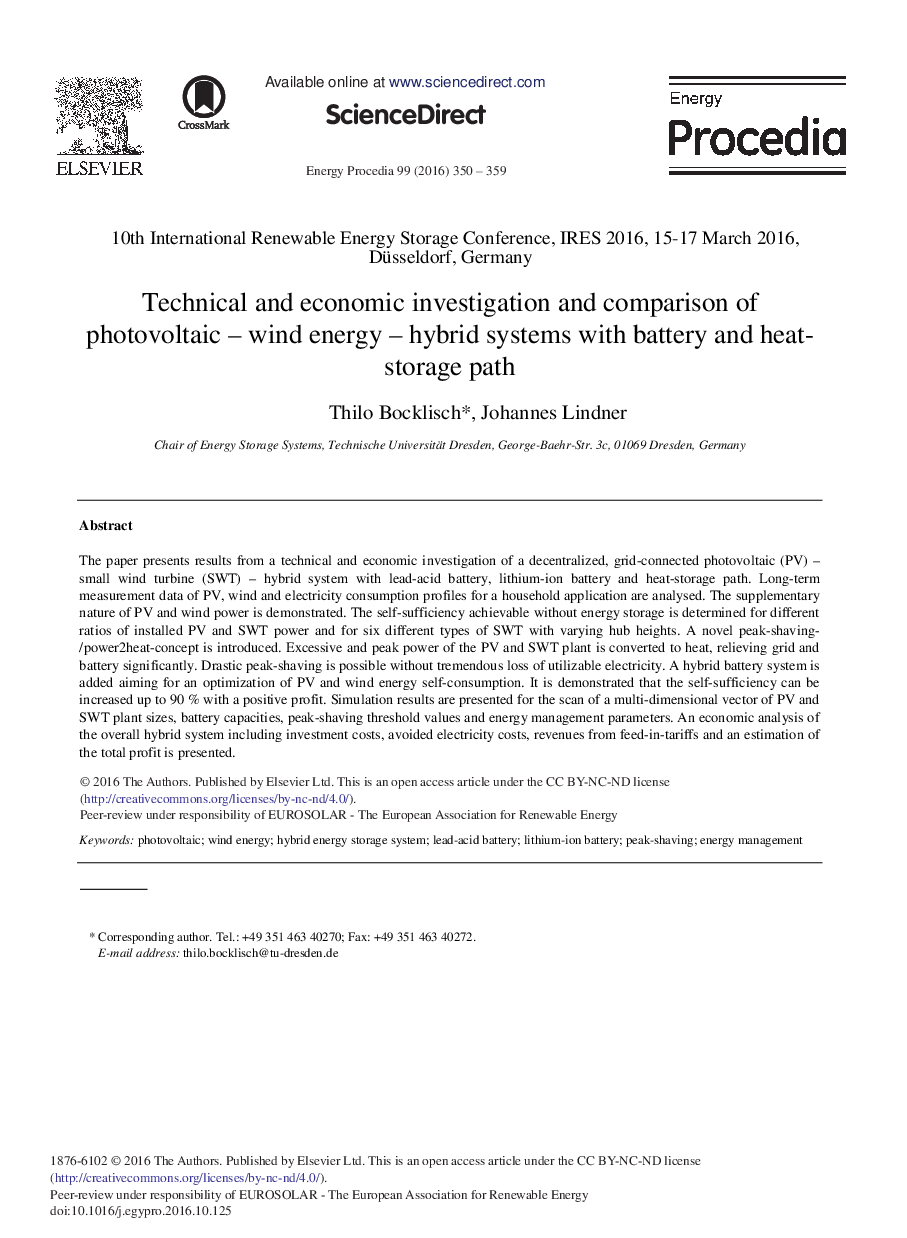| Article ID | Journal | Published Year | Pages | File Type |
|---|---|---|---|---|
| 5446687 | Energy Procedia | 2016 | 10 Pages |
Abstract
The paper presents results from a technical and economic investigation of a decentralized, grid-connected photovoltaic (PV) -small wind turbine (SWT) - hybrid system with lead-acid battery, lithium-ion battery and heat-storage path. Long-term measurement data of PV, wind and electricity consumption profiles for a household application are analysed. The supplementary nature of PV and wind power is demonstrated. The self-sufficiency achievable without energy storage is determined for different ratios of installed PV and SWT power and for six different types of SWT with varying hub heights. A novel peak-shaving-/power2heat-concept is introduced. Excessive and peak power of the PV and SWT plant is converted to heat, relieving grid and battery significantly. Drastic peak-shaving is possible without tremendous loss of utilizable electricity. A hybrid battery system is added aiming for an optimization of PV and wind energy self-consumption. It is demonstrated that the self-sufficiency can be increased up to 90% with a positive profit. Simulation results are presented for the scan of a multi-dimensional vector of PV and SWT plant sizes, battery capacities, peak-shaving threshold values and energy management parameters. An economic analysis of the overall hybrid system including investment costs, avoided electricity costs, revenues from feed-in-tariffs and an estimation of the total profit is presented.
Keywords
Related Topics
Physical Sciences and Engineering
Energy
Energy (General)
Authors
Thilo Bocklisch, Johannes Lindner,
